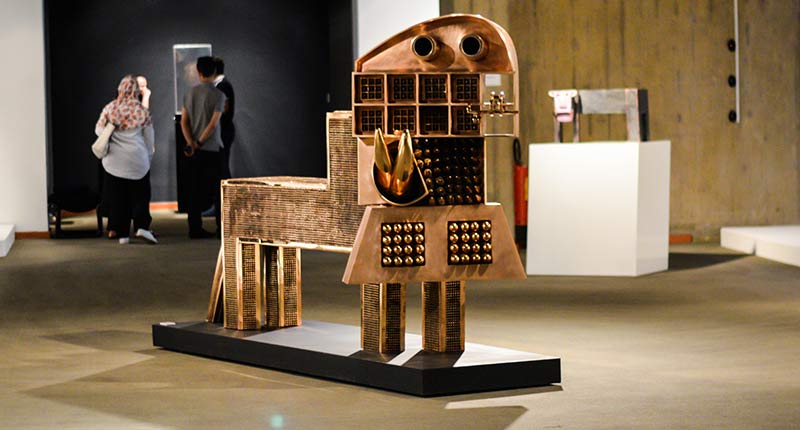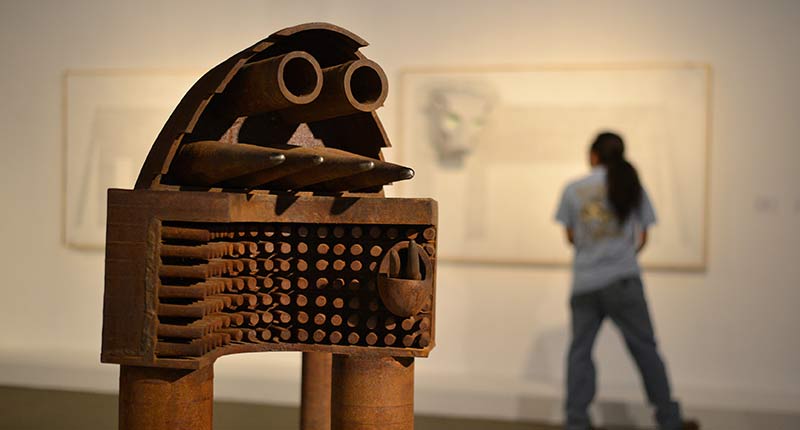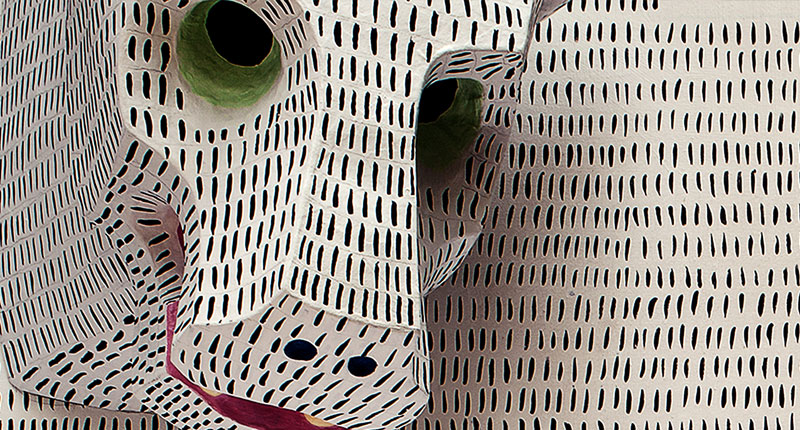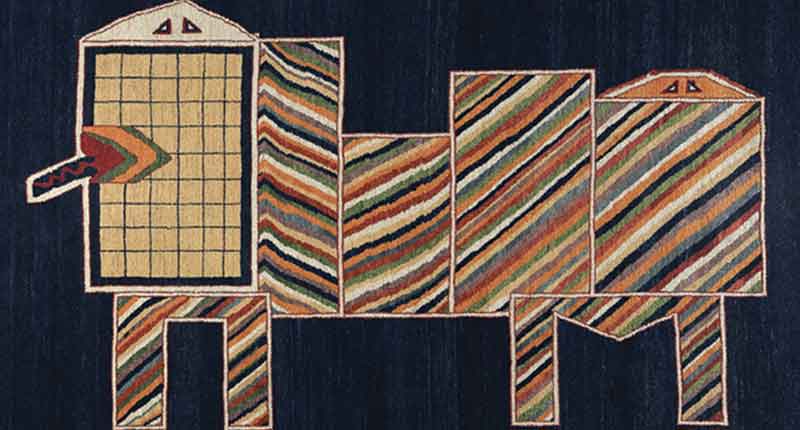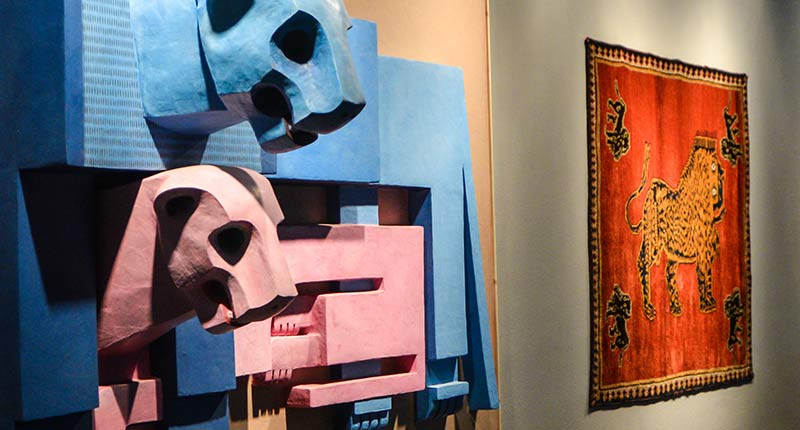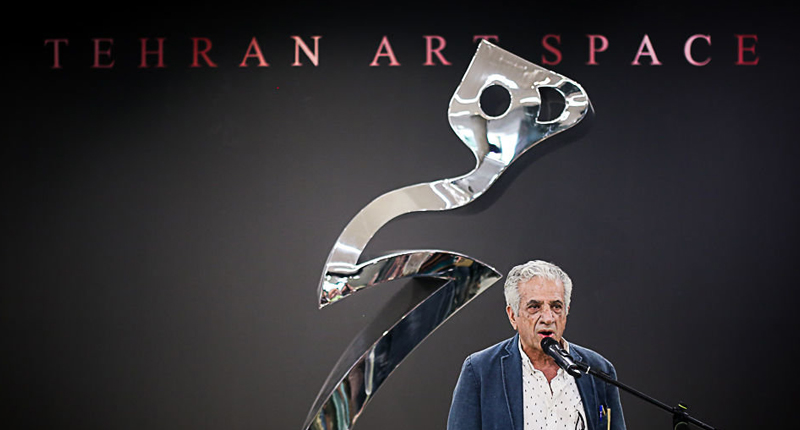"Parviz Tanavoli's Lions of Iran exhibition gets green light after Rouhani’s victory"
By Hadani Ditmars | The Art Newspaper
10 July 2017
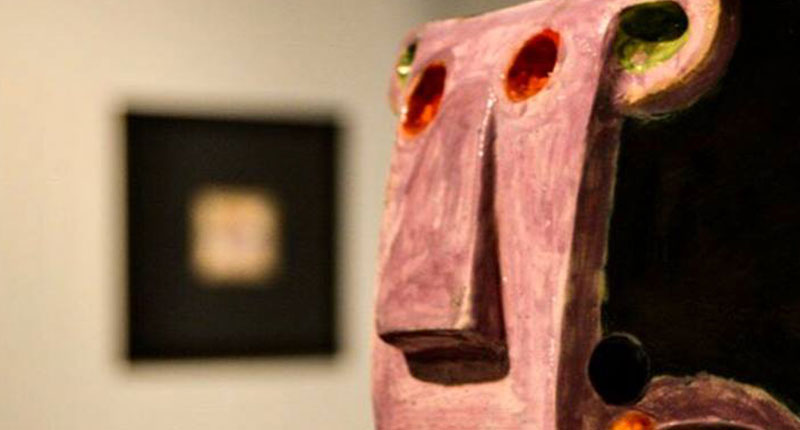
Almost 1,000 guests attended the opening night to support the show, organized by Iran’s leading artist
Parviz Tanavoli’s long-planned exhibition, the Lions of Iran, was finally “green-lighted” following Hassan Rouhani’s victory in the June elections in Iran. Almost 1,000 patrons attended the opening at the Tehran Museum of Contemporary Art (TMoCA) on 2 July for what the 80-year-old artist described as his most successful show to date.
“My efforts have been rewarded,” a delighted Tanavoli told The Art Newspaper on the opening night. “It was so full we had to close the doors.” The exhibition, which shows the cultural continuum of the lion as a symbol from Ancient, Islamic and Modern periods, features large-scale works by Tanavoli and artefacts from his personal collection alongside loans from the National Museum of Ancient Iran. Among the 100 foreign guests in attendance were Moya Carey, a curator at the Victoria & Albert Museum, and Michael Jeha, the director of Christie’s Dubai. It is hoped the exhibition will travel abroad.
“The exhibition is a valuable moment for Iran and Iranians in itself,” Carey says. “Iran has been through a lot in the past 80 years and Tanavoli is a unifying figure whose work can be a positive healing force. But to send the show abroad would create real positive reinforcement for the national image.”
One notable absence on the opening night was David Galloway, the art critic and founding curator at the Tehran Museum of Contemporary Art who contributed to the exhibition catalogue. Tanavoli had hoped he would deliver an opening speech, but Galloway was denied a visa by the Iranian authorities. Tanavoli said this was likely due to the reciprocal ban Iranian authorities have placed on US passport holders. Majid Molla-Norouzi, Director General of Iran’s Visual Arts Office and director of TMoCA, told Tanavoli his show was “the most successful, significant and extensive show in our museum to date”. But it was also a triumph for cultural diplomacy. “If hardliners had won [the elections], it would not have been so easy,” Tanavoli says.
In fact the exhibition, several years in the planning, was far from an easy process. Tanavoli wore many hats in organizing of the exhibition: curator, artist, collector and informal diplomat as he negotiated with Iran’s considerable bureaucracy to gain rare permission to exhibit treasures from both the National Museum of Iran and the Reza Abbasi Museum. More than 40 historical objects are on display including the famed golden dagger of Darius the Great as well as a golden Rhyton with a lion’s head from the Achaemenid era. “The intent with this exhibition,” Tanavoli says, “is to present a symbol–the lion–that has persevered for 5000 years. This is my way of demonstrating that Iranian culture has survived for millennia and will not disappear. Politics cannot destroy it.” Whether or not the show will travel to overseas institutions remains to be seen, but Tanavoli believes it could build bridges. “I think it can open new doors to Iran and show different faces of the nation. People can see five millennia of history through a single animal,” he says.

